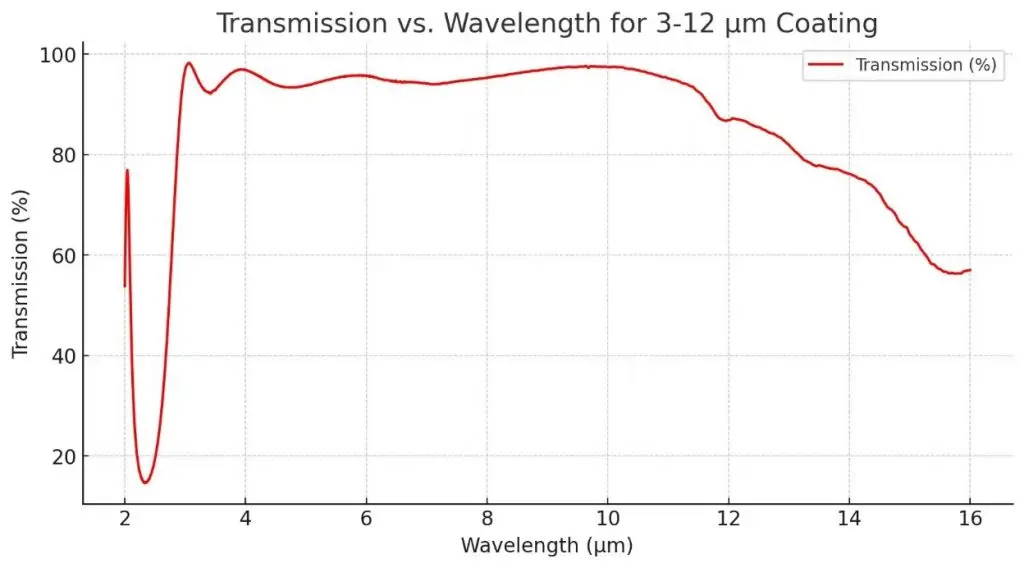When comparing N-type and P-type germanium for long-wave infrared (LWIR) imaging and optical windows, the IR transmission properties play a critical role. LWIR typically refers to the wavelength range from 8 to 14 µm.

IR Transmission in LWIR
- N-type Germanium:
- Doped with elements like phosphorus, arsenic, or antimony.
- Exhibits higher free carrier absorption in the IR range, especially noticeable in the LWIR region.
- As a result, the transmission in the LWIR range is generally lower compared to P-type germanium.
- P-type Germanium:
- Doped with elements like boron, gallium, or indium.
- Has lower free carrier absorption in the IR range, making it more transparent in the LWIR region.
- This characteristic leads to better IR transmission in the LWIR range compared to N-type germanium.
Suitability for LWIR Imaging and Optical Windows
- Higher IR Transmission: For LWIR imaging and optical windows, high transmission in the 8-14 µm range is crucial. P-type germanium typically offers higher transmission in this range due to lower free carrier absorption.
- LWIR Imaging: In LWIR imaging systems, maximizing the transmission of the optical elements improves the sensitivity and quality of the captured images. Therefore, P-type germanium is usually preferred for its superior transmission properties in the LWIR range.
- Optical Windows: For applications involving optical windows that need to transmit LWIR radiation effectively, P-type germanium is also more suitable due to its higher transparency in this wavelength range.

Conclusion
P-type germanium has higher IR transmission in the LWIR range and is generally better suited for both LWIR imaging and optical window applications. Its lower free carrier absorption ensures better performance in these applications compared to N-type germanium.


